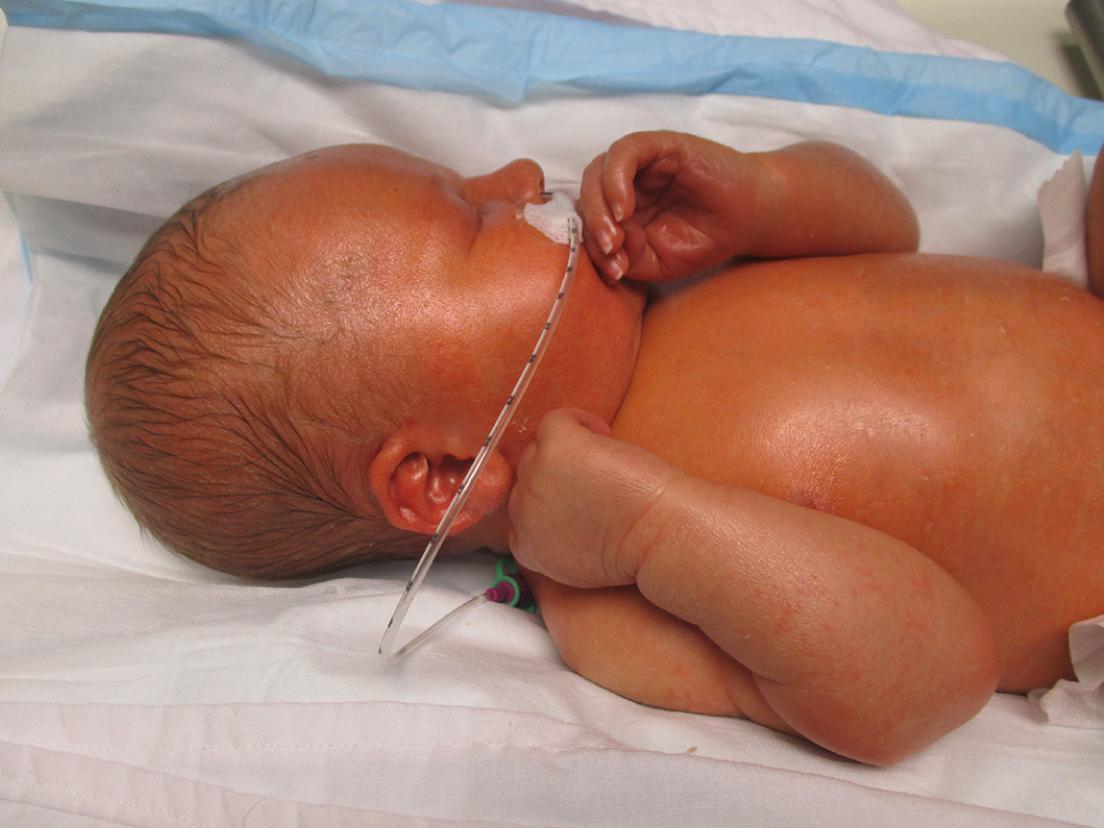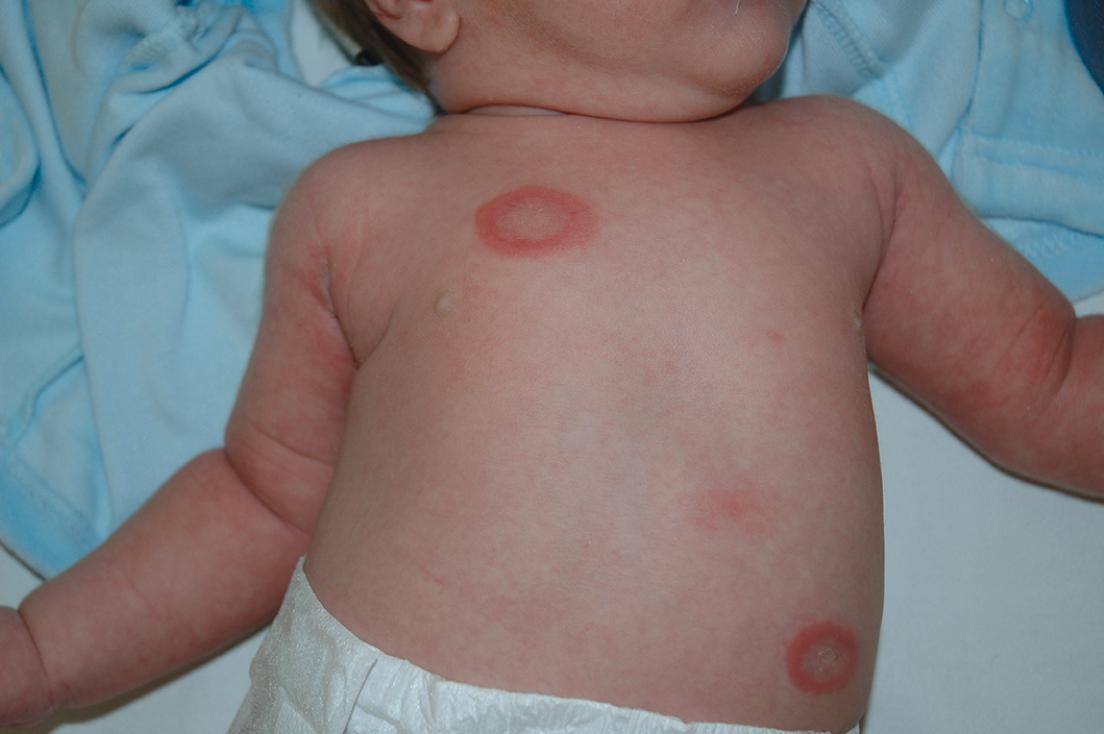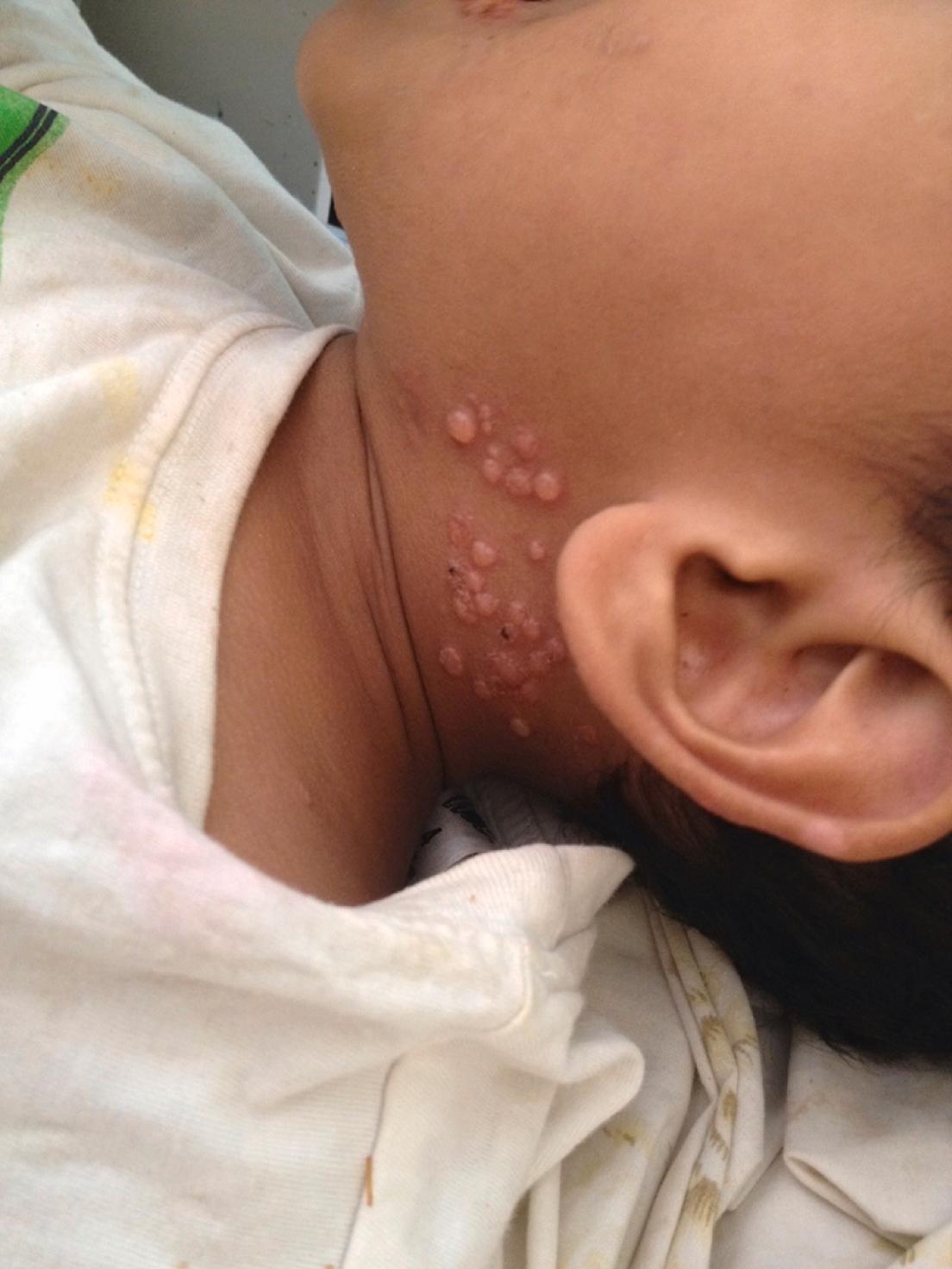Physical Address
304 North Cardinal St.
Dorchester Center, MA 02124
The skin has many important functions. It provides a physical, chemical and immunological barrier and has a major role in thermoregulation, electrolyte balance, metabolism, sensation and physical appearance. Defects or changes in the skin can impact on these functions.
At birth, the barrier function of the skin is reduced, particularly in premature infants. This makes newborns vulnerable to increased transepidermal water loss and increased absorption of topically applied agents. This barrier function improves rapidly after birth and even in premature infants, will have matured by 3 to 4 weeks of age. Neonates are also susceptible to percutaneous toxicity due to the increased ratio of surface area to volume and the frequent presence of occlusive agents (e.g. nappies). Skin-barrier function can be further reduced by the presence of inflammatory dermatoses such as eczema. Caution is needed with use of any topical product in neonates due to the risk of absorption, including topical antiseptics (iodine, chlorhexidine, alcohol) and corticosteroids. It is recommended that agents such as neomycin, boric acid, urea and salicylic acid are avoided in premature infants and neonates.
Skin care of neonates should in general be kept simple and minimise exposure to unnecessary products (e.g. no soaps, bubble baths, perfumes, herbal products or fragrances). It is usually recommended that infants are bathed every few days using either plain water or a gentle soap substitute. Baby wipes, although practical, can be a cause of napkin dermatitis, and in general plain water and a soft cloth is preferable. Barrier creams such as petroleum jelly or zinc and castor oil can be used to prevent irritant napkin dermatitis.
Neonatal dermatological presentations include a number of differential diagnosis ( Table 4.3.1 ).
| Red and Scaly Rashes |
|
| Pustular |
|
| Vesicles and bullae |
|
| Birthmarks |
|
| Vascular lesions |
|
| Brown/black |
|
| Blue/purple lesions |
|
Erythroderma in the neonatal period (defined as erythema affecting >90% of the body surface area) has many causes, some of which may be life threatening. Admission is required for investigation, diagnosis and management. Erythrodermic infants are at risk of temperature instability, fluid loss and infection due to abnormal skin barrier function.

Inflammatory dermatoses:
Psoriasis, eczema, pityriasis rubra pilaris, diffuse cutaneous mastocytosis
Ichthyoses
Immunodeficiency:
Severe combined immunodeficiency, Omenn syndrome, immunodysregulation polyendocrinopathy enteropathy X-linked (IPEX) syndrome, DiGeorge syndrome, hyper-IgE syndrome, graft versus host disease
Drug reactions
Metabolic diseases:
Acrodermatitis enteropathica, organic acidemias
Infections:
Staphylococcal scalded skin syndrome, staphylococcal toxic shock syndrome, congenital cutaneous candidiasis, syphilis, perinatal herpes simplex.
Investigations should be determined by history and examination findings and are best determined in conjunction with inpatient management teams to minimise unnecessary tests and duplications, but may include:
blood count, renal and liver function, calcium, albumin, zinc
arterial blood gas
immunoglobulins and lymphocyte subsets
plasma amino acids, and urine amino and organic acids
skin swabs for bacterial, fungal, viral studies
skin biopsy
hair microscopy
genetic studies.
These infants should be admitted for investigation and management:
Fluids and nutrition – close monitoring of hydration, electrolytes and nutrition is important. Nasogastric feeds or intravenous fluid may be needed in some infants.
Thermoregulation – heat loss through inflamed skin may result in hypothermia. Keep the infant wrapped when possible or under heat lamps.
Prevent secondary infection – erythrodermic infants are at risk of staphylococcal, streptococcal or Gram-negative infections. Fever may be absent, even if infection is present. Good infection control measures are imperative. Have a low threshold for initiating antibiotic treatment. Where there is concern about possible severe immunodeficiency, protective isolation and positive pressure rooms should be used.
Support skin-barrier function – application of a bland petrolatum-based emollient (e.g. 50:50 liquid:white soft paraffin) every 3 to 4 hours and regular bathing in plain water or oily baths are recommended. Caution should be taken with application of products to the skin due to the increased risk of percutaneous absorption or skin irritation.
Eczema usually presents later in infancy, although it can present in the neonatal period. This presentation has been described as infantile seborrheic dermatitis in the past, but international opinion is divided as to whether seborrheic dermatitis is a subset of eczema or a separate entity. It may commence on the scalp and face as confluent erythema and vesicles with adherent yellow-brown scale, or within the nappy area where it results in moist erythema in the inguinal folds. The scale on the scalp can become quite thick and adherent, so-called cradle cap. In the flexures of the neck, axilla, antecubital and popliteal fossae there may be a confluent moist erythema. On the trunk there may be oval erythematous scaly lesions which may coalesce.
Treat with soap-free emollient washes and regular application of moisturiser. Topical antifungals (e.g. miconazole), and 1% hydrocortisone, can be effective if needed. Scale can be lifted from the scalp by massaging with a nonirritating oil or moisturiser and use of 2% ketoconazole shampoo. No feeding changes are needed.
Any neonate presenting with significant and widespread eczema should be assessed for conditions including ichthyoses, Netherton syndrome and other causes of erythroderma (see Chapter 15.1 , Dermatology).
Psoriasis is uncommon in the neonatal period and usually presents as anogenital erythema. Pustular psoriasis can cause sheets of exfoliative erythema with sterile pustules (see Chapter 15.1 , Dermatology).
Neonates with more severe forms of ichthyosis may present to EDs with complications of dehydration (due to increased transepidermal water loss), infection or failure to thrive (see Chapter 15.1 , Dermatology).
Neonatal lupus erythematosus occurs in infants whose mothers are positive for anti-Ro/SSA and/or anti-La/SSB antibodies. Most of these mothers are asymptomatic and unaware of their antibody status. About 2% of infants of antibody-positive mothers develop complete heart block and 4–16% develop cutaneous neonatal lupus.

Skin lesions in neonatal lupus can first appear from a few days to a few months after birth. Widespread, erythematous, often annular and atrophic lesions develop most often in the periorbital area and scalp but can affect elsewhere. These can be misdiagnosed as tinea or eczema. They persist for months before clearing as the maternal antibodies clear. Moderate-potency topical steroid assists clearing. Sunlight and ultraviolet light can precipitate or worsen the rash.
The other major manifestation of neonatal lupus is complete heart block (from the third trimester). This is permanent and can be fatal; a pacemaker is required. Only a small proportion of infants with neonatal lupus have both cardiac and cutaneous disease.
All infants with neonatal lupus presenting with skin lesions require ongoing follow-up as they appear to have an increased risk of developing autoimmune thyroid or rheumatological disorders during childhood. Approximately 25% of the mother’s subsequent pregnancies develop neonatal lupus and so antenatal care should include cardiac monitoring of the foetus. Any older siblings should be assessed to exclude heart block. Most mothers eventually develop rheumatological disease and also require referral for follow-up.
Zinc deficiency, either inherited or acquired, can cause a progressive red scaly and crusted rash on the face, distal limbs and perianal region. Onset is usually later in infancy, although it can rarely be in the neonatal period (see Chapter 15.1 , Dermatology).
Langerhans cell histiocystosis (LCH) is a rare histiocytic disorder that can present at any age but is most common between one and three years of age. LCH may present in several ways especially as a petechial nappy rash or seborrheic dermatitis. It should be considered as a possible diagnosis in any unusual, non-healing rash in infancy.
This is extremely uncommon in the neonatal period. Red annular rashes in neonates are more likely to be eczema, urticaria or neonatal lupus.
Congenital syphilis is due to the transmission of Treponema pallidum from an infected pregnant woman to her foetus. The severity of disease is variable; as many as 90% of affected newborns have no signs at birth. Clinical findings include hepatomegaly, jaundice, nasal discharge, lymphadenopathy, pseudoparalysis and ophthalmological/central nervous system (CNS) and skeletal changes. The rash usually appears 1 to 2 weeks after the rhinitis and consists of red-pink spots most prominently on the back, buttocks, palms and soles. It progressively desquamates and fades to a dull red/copper colour. Occasionally, congenital syphilis can present with bullae, periorificial fissuring or condylomata lata (moist perineal papules).
The diagnosis can be made by assessment of maternal and infant serology, darkfield examination of infected body fluids or histology of the placenta/umbilical cord or infected tissue with immunofluorescence. X-rays may show evidence of bony changes in long-standing disease.
Referral to a paediatric infectious disease specialist for management is appropriate. Child-protection issues need to be considered if acquired postnatally.
A neonate with vesicles ( Fig. 4.3.3 ) or blisters requires urgent assessment, as potential causes include serious infections.

Collect epithelial cells from the base of a vesicle for viral culture and polymerase chain reaction assay (PCR). Care needs to be taken to collect sufficient cells for analysis.
Neonates who acquire herpes simplex virus (HSV) at birth usually present at a few days of age with grouped vesicles, often on the scalp. Lesions may rapidly spread and coalesce. Herpes infection may be associated with fever, pneumonitis, transaminitis and conjunctivitis. Approximately 30% of neonates with apparently localised skin disease also have CNS involvement.
In addition to viral testing of the vesicle as above, blood should be taken for blood count and liver function, and blood and cerebrospinal fluid HSV PCR should be performed. Admission and empiric treatment with intravenous aciclovir are essential until HSV has been excluded.
Become a Clinical Tree membership for Full access and enjoy Unlimited articles
If you are a member. Log in here